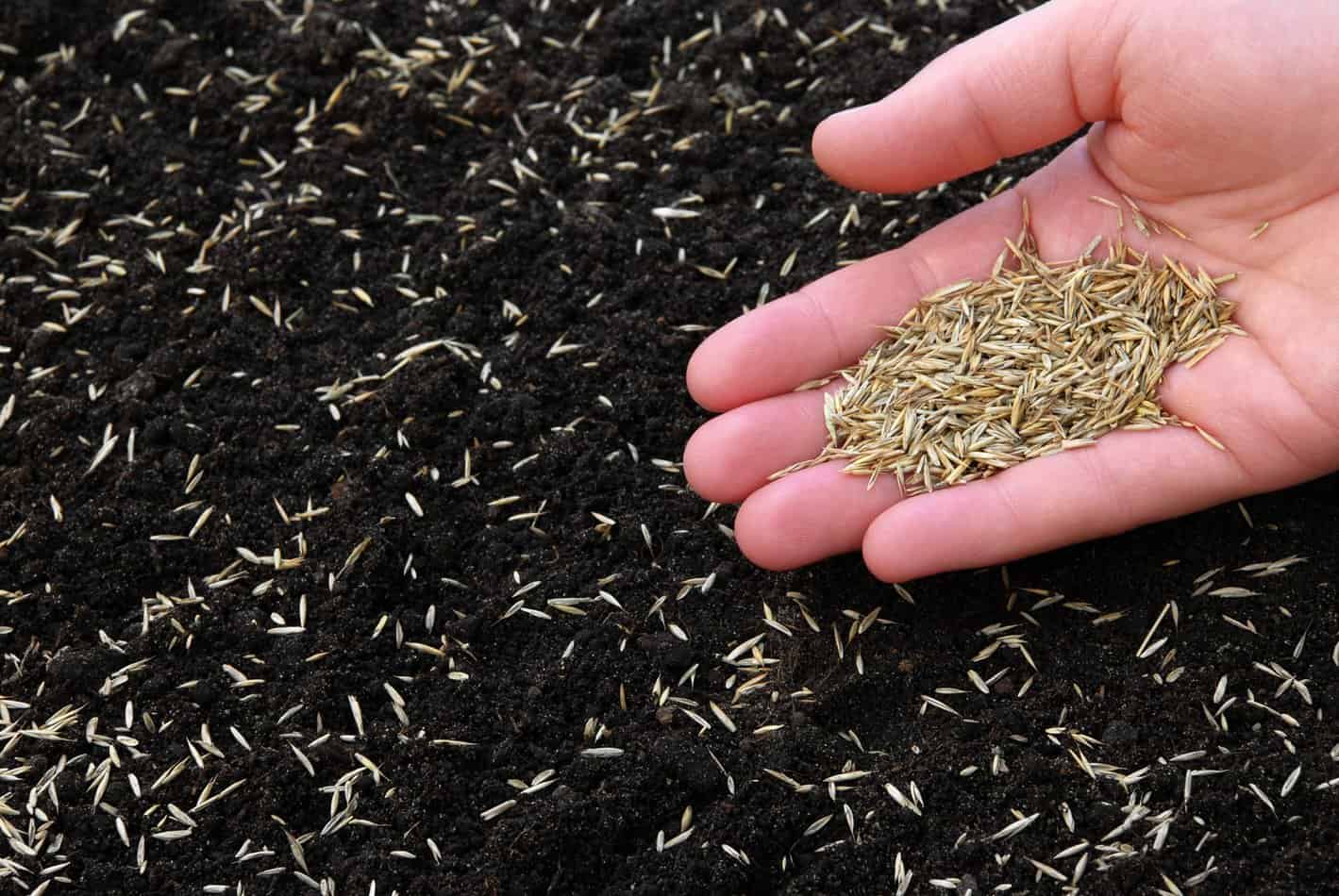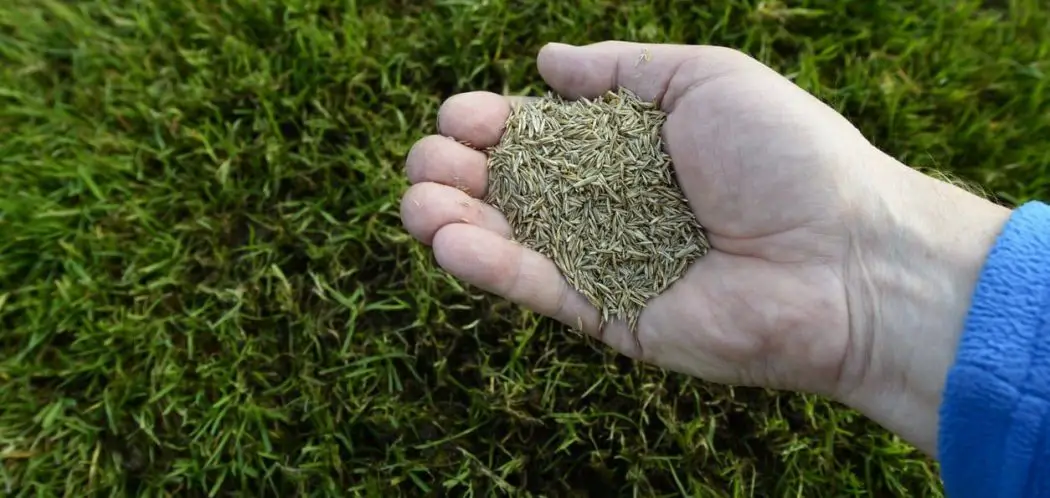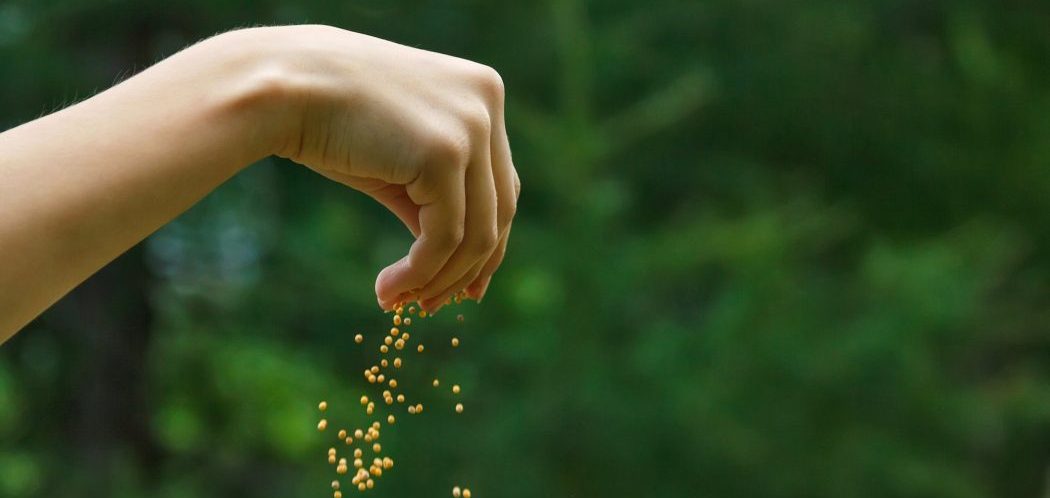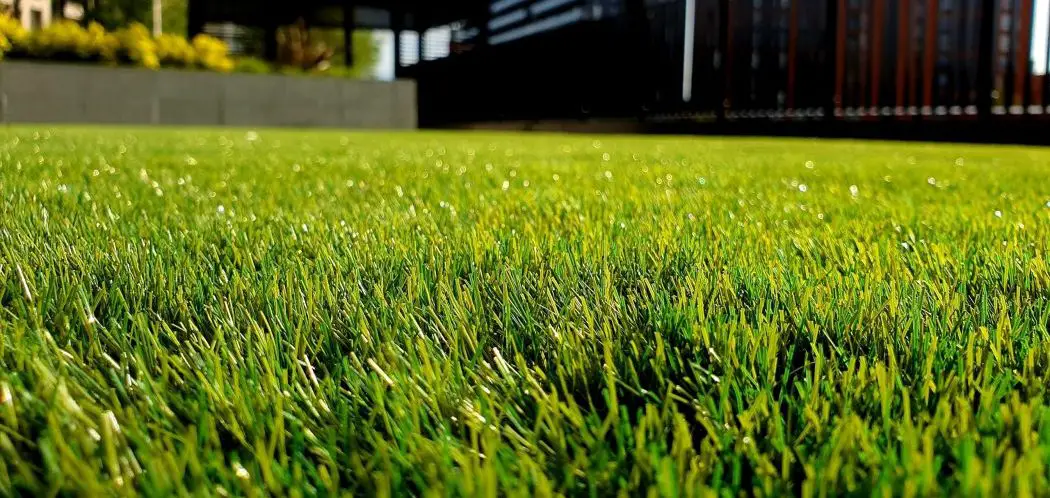A lush, healthy lawn is a joy to behold. But getting grass to grow can be hit or miss. You diligently plant grass seed only to end up with patchy sprouts or none at all.
This is frustrating when you know you purchased quality seed. So what happened? Does grass seed actually go bad and become unusable?
Grass seed lasts 3-5 years before going bad if properly stored in a cool, dry place in an airtight container. Seeds deteriorate over time due to moisture loss, oxygen exposure, temperature fluctuations and pests. Signs seed has expired include mold, odor, dryness, low germination rates, and weak sprouts.
In this article, we’ll cover:
- Why and how grass seed loses viability
- How long grass seed lasts before going bad
- How to test if old grass seed is still good
- Effects of using expired grass seed
- The best ways to store grass seed for maximum longevity
- When you should throw out old grass seed and buy fresh
Knowing the shelf life of seed empowers you to grow the lush lawn you want. Let’s dig in!
Why Does Grass Seed Go Bad?
Before we look at how long seed remains viable, it helps to understand why it deteriorates over time in the first place.
There are four main factors that cause grass seeds to expire:
Moisture Loss
Grass seed is living plant matter that needs some moisture to remain viable. Over time, stored seeds lose moisture from evaporation. This causes the seed to dry out, shrivel up, and die.
Oxygen Breakdown
Exposure to excess oxygen also damages seed. Oxidation reactions degrade the protective cell walls in seeds. This disruption kills the embryonic grass plant inside.
Temperature Extremes
Heat, cold, and fluctuations in temperature speed up the deterioration process. The enzymes, cells, and nutrients in seeds break down fastest when not kept at stable, moderate temps.
Microbes and Pests
Bacteria, fungi, and hungry insects can attack stored grass seed. They digest the nutrients while also spreading diseases. This rapidly destroys the seed. Rodents are also problematic pests.
So dryness, air, temperature swings, mold, and pests all work together to kill grass seed over time. Buy fresh seed and store it properly to maximize its lifespan.
How Long Does Grass Seed Last Before Going Bad?
So how long does a bag of grass seed remain usable before deteriorating? Shelf life can vary quite a bit, but here are some general timeframes:
- Unopened grass seed stored properly can remain viable for 3-5 years in most cases. Cool season grasses at the high end of this range and warm season grasses toward the lower end.
- Once opened, the viability period shrinks. But resealed seed stored correctly can still last 2-3 years on average if cooled, dessicated, and kept pest free. Again, adjust expectations based on grass species.
- Seed that is improperly stored in hot, humid, or fluctuating conditions will deteriorate much faster. 1-2 years is the norm before germination rates start dropping noticeably.
- Very old seed or seed that was improperly stored at some point may lose viability after only 1 year now, even if stored correctly going forward. The deterioration process speeds up over time.
These timeframes assume proper storage protocols are followed from the point of purchase. But realize manufacturers build in a margin of error with expiration dates, usually conservative estimates. So unopened seed lasting 1-2 years beyond the package date is common when refrigerated or frozen.
For best germination results, planting grass seed within 1-3 years of purchase, before expiration, is ideal. Refrigeration can stretch unopened seed to 4-5 years in some cases. Freezing can essentially pause the aging process for many years. But seed more than 5 years old is risky.
Many factors affect shelf life:
Seed Type
Cool season grasses like fescue and bluegrass tend to stay viable for 3-4 years when properly stored. Warm season varieties like Bermuda and zoysia decline faster, lasting 2-3 years typically. More delicate native and specialty seeds may last only 1-2 years.
Seed Quality
Reputable suppliers with frequent turnover provide the freshest seed with the longest viability. Local or bargain seed may already be months or years old before you purchase it. Checking production date helps identify the oldest seed.
Storage Method
As mentioned, storage protocol is key. Let’s examine best practices for maximizing shelf life next.
Storing Grass Seed Properly to Extend Shelf Life
The right storage method can easily double or triple the lifespan of your grass seed. Here are tips:
- Store in a cool, dry place like a cabinet or closet. The ideal temperature range is 55-70°F.
- Use an airtight container like a sealed plastic bin or mylar bag. This retains moisture and prevents pests.
- Avoid direct sun exposure which can create hot spots.
- For long-term storage, refrigerate seed. Stable temps near 40°F are ideal.
- For seed you plan to keep over 5 years, consider freezing it. This nearly stops deterioration.
- Inspect storage containers periodically. Discard moldy seed right away before it spreads.
- Avoid high humidity which allows mold growth. Include a desiccant or oxygen absorber if needed.
- Ensure containers protect against pests. Discard any seed showing signs of insects.
Take the time to store your seed properly right from the start. This prevents avoidable moisture loss, temperature changes, air exposure, and pests that quickly ruin grass seed.
With ideal storage methods, you can maximize shelf life and stretch your seed purchases further.
How To Tell If Old Grass Seed Is Still Good
If you uncover an old, forgotten bag of grass seed way in the back of your garage shelf, is it still okay to plant?
There are a few ways to test if expired grass seed remains viable:
Check Moisture Level
Open the bag and inspect the seed. It should not feel overly dry, brittle, or crumbly. A little moisture should be present.
Look For Mold
Inspect for visible fungal mold, which will look fuzzy or discolored. Also watch for wet, mushy clumps. Moldy seed is bad.
Smell Contents
There should not be a rancid or musty odor. Discard any smelly seed.
Do a Germination Test
Sprout a sample of seed between damp paper towels and see what percentage germinates within 5-10 days. At least 50% should sprout for seed to remain useful.
Observe Seedling Health
Plant a small patch. If seedlings grow weakly or malformed, the seed is past its prime. Healthy germination indicates good viability.
With these tests, you can determine if old grass seed is still okay to use up. But if there’s any doubt, don’t waste your time planting seed that’s past its expiration date. Pick up some fresh bags instead for the best results.
Dangers of Using Expired Grass Seed
Planting old, dead grass seed will produce frustrating results. But beyond just having to reseed, there are some other risks to using seed that’s gone bad:
Poor Germination
Expired seed may sprout weakly, sporadically, or not at all. This leads to patchy areas that require reseeding later.
Sprout Defects
Grass sprouts from bad seed often grow with deformities, yellowed blades, stunted size, or susceptibility to disease. Weak grass chokes out easily.
Mold Spread
Fungal diseases in old seed will transfer to soil and can infect grass seedlings. This may kill the entire lawn.
Wasted Money
It’s expensive to keep replanting bad seed and applying extra water, fertilizer, and care trying to nurse weak grass along.
Invasive Weeds
Patchy, sparse grass allows aggressive weeds like crabgrass and dandelions to take over open areas of your lawn.
Don’t waste time and money on old, ineffective grass seed. Start your lawn off right with fresh, viable seed to avoid issues down the road.
When To Throw Out Old Grass Seed
Based on all we’ve discussed, here are some good guidelines on when to discard old grass seed:
- Visible mold growth like fuzzy spots or white, gray, or black powdery patches indicates fungal or bacterial contamination. Discard moldy seed, as the spores can spread to soil.
- A strong, sour, musty or ammonia-like odor is another clear sign seed has spoiled. Good seed should have a fresh, neutral smell.
- Extremely dry, brittle seeds that break apart easily have lost too much moisture. This causes cell death and non-viability. Some minor driedness is normal over time, but extreme fragility is bad.
- Germination testing is the best way to identify non-viable seed. Place seed between damp paper towels and check the % that sprout within 7-10 days. Less than 50% germination means poor remaining viability.
- Most grass seed lasts 3-5 years if stored properly. But seed older than 4 years has declining odds, especially warm season grasses. Discard seed past 5 years old.
- Similarly, discard any seed more than 2 years past the “sell by” or expiration date on the packaging. The date allows a 1-2 year buffer of remaining viability.
- If sprouts grow deformed, yellowed, stunted or weakened, the seed was likely expired. Quality seed produces consistent, healthy sprouts. Weak growth signals viability issues.
When in doubt, perform a home germination test. But clear signs like mold, odor, extreme fragility, and old age mean the seed should be discarded and replaced with fresh inventory. Don’t waste time and effort trying to salvage or plant bad seed.
Maximizing Shelf Life of Grass Seed
Here are some final tips for making your grass seed last as long as possible:
- Buy smaller quantities so you use it up faster
- Prioritize cool season grass species that have longer shelf life
- Purchase from quality suppliers and check production date
- Immediately place seed in ideal storage conditions
- Limit opening and resealing bags
- Plan your grass planting schedules for spring and fall
- Swap leftover seed with gardening friends
- Germination test older seed batches before use
With proper planning and storage, you can stretch your grass seed investment over several planting seasons. Just be sure to pay close attention to viability so you don’t waste effort on expired seed.
Now that you know the shelf life and signs of deterioration in grass seed, you can grow lush lawns year after year. Time to get planting!
Summary of Key Points: Does Grass Seed Go Bad?
Like any living organism, grass seed has a finite lifespan and will eventually expire and die off. Its viability and germination rates slowly decrease over time.
On average, grass seed sealed in airtight packaging can remain viable for 3-5 years if stored properly in cool, dark, dry conditions. Once opened, the shelf life decreases to 2-3 years for most cool season grasses due to increased air exposure and moisture loss.
Proper storage is key to preservation. Cool temperatures around 40-55°F, containment in air and water-tight vessels, maintaining low humidity below 50%, and preventing pest access all help maximize seed longevity.
Watch for signs of deterioration like visible fungal mold, a strong musty or sour odor, extreme dryness or brittleness, clumping from excess moisture, and low germination rates under 50% in testing. These all indicate non-viable seed.
Discard and replace any grass seed more than 4 years old, past the expiration date, or showing these warning signs. Using old, non-viable seed leads to poor germination, patchy turf, aggressive weeds, and turf health issues.
Always start new lawn and reseeding projects with fresh, high-quality seed purchased that season. Store excess seed in proper cold, dark, dry, airtight conditions to potentially extend viability up to 5 years if absolutely needed.
With the right protocols, you can grow lush, beautiful grass for years while making your seed investment last. Be diligent about maximizing shelf life for success.





